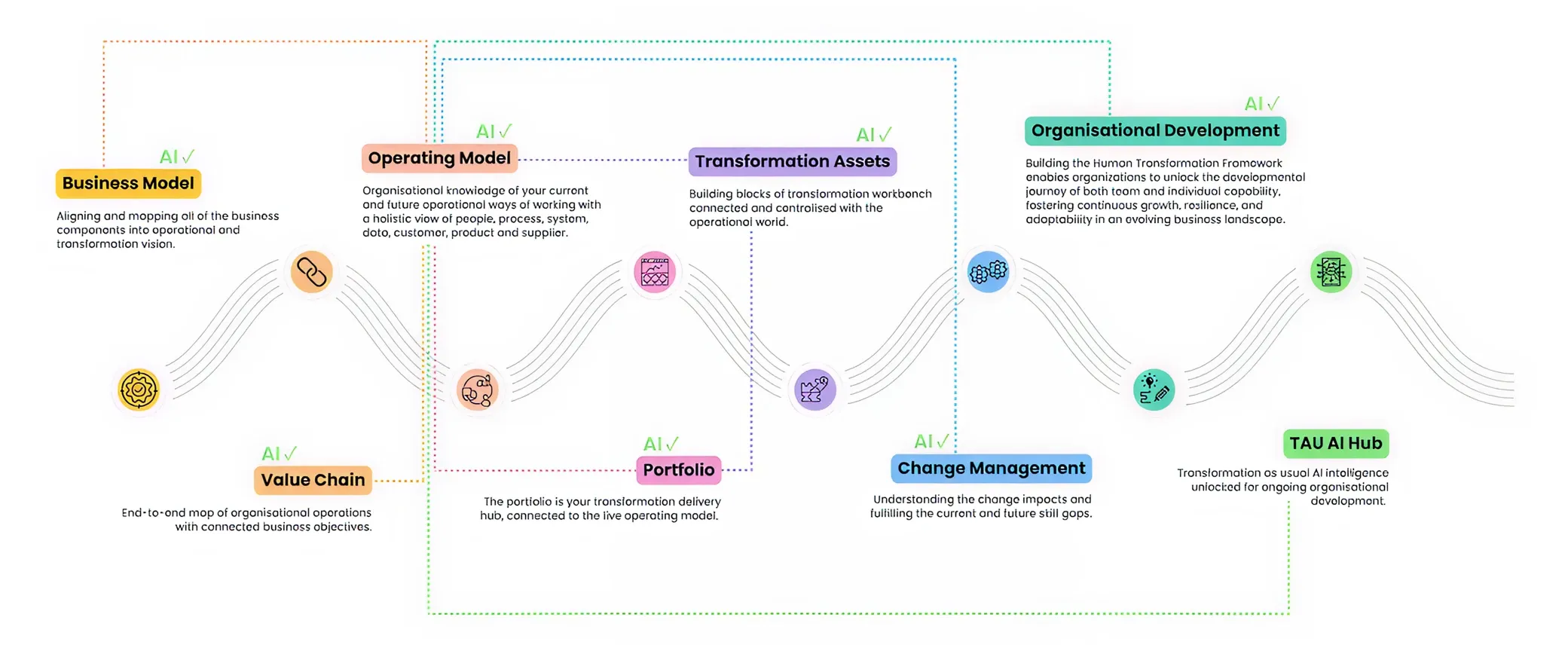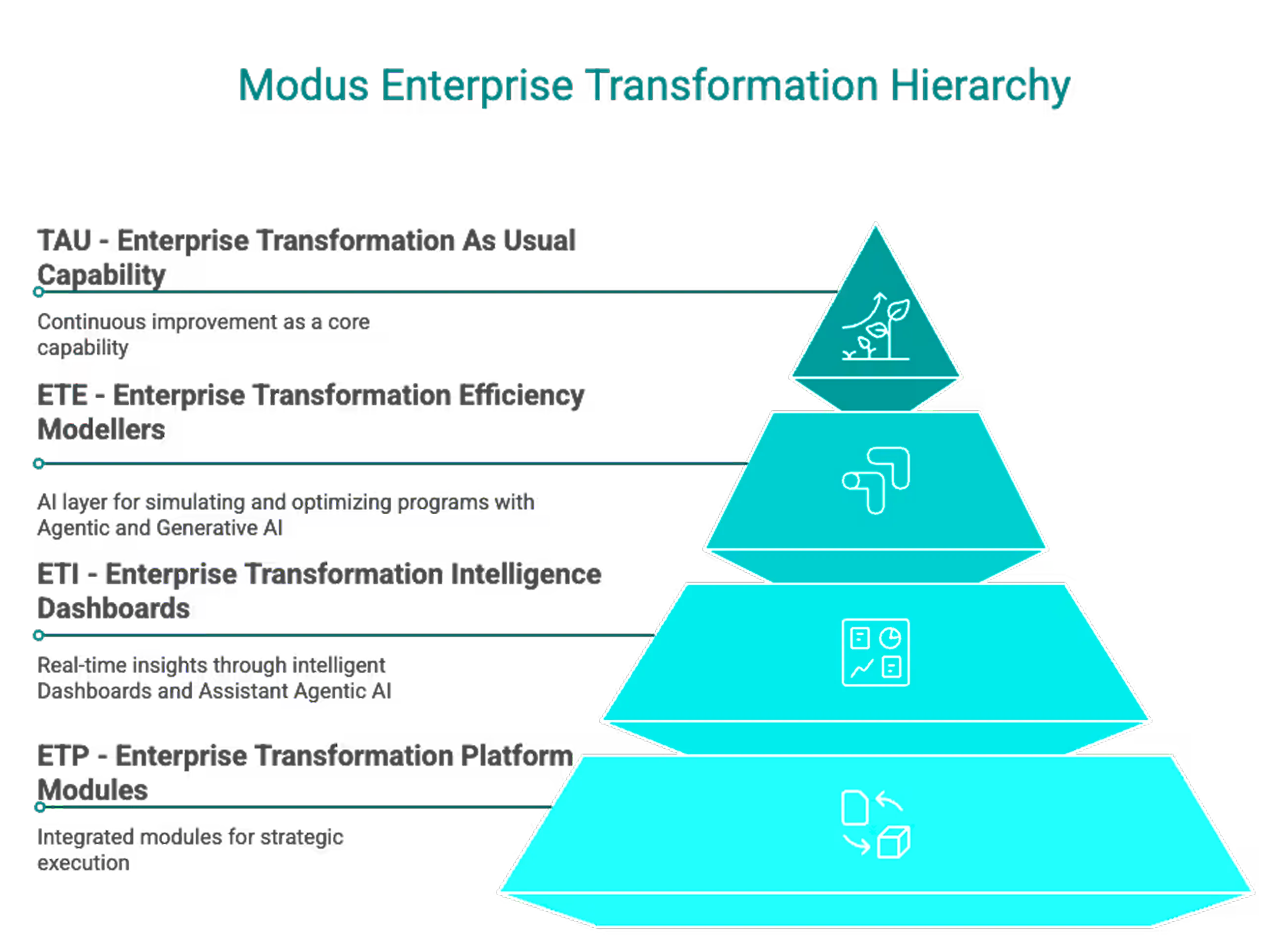
How education governance works

Modus ETP
Empowering Transformation with Modus ETP's Core Components, integrated tools designed to enhance strategic alignment, operational efficiency, and sustainable change management across complex, multi-layered enterprises.
Read MoreModus Business Transformation & Core Modules
Building, Driving and Sustaining your Business Transformation and embedding a 'Transformation As Usual' platform.
01
Strategy Management Modeler
Set up and evaluate your business models by addressing key elements such as markets, customers, products, services, and future business objectives.
02
The Value Chain Modeler
Comprehend and map your entire business model across the value chain, illustrating the touchpoints and planning strategic growth across all areas.
03
The Operating Model Workbench
Define, capture, and visualize your operational processes and activities, maintaining a continuous knowledge hub for evolving ways of working.
04
The Portfolio Management Workbench
Centralize and optimize the management of transformation assets and initiatives, ensuring smooth tracking and execution for efficient delivery and results.
05
The Change Management Workbench
Engage and implement successful change strategies by fostering adoption across teams, building organizational structure and enhancing individual skills.
06
The Organizational Development Workbench
Analyse and mobilise agile teams and users, embedding transformation agility and sustainability within the organization to ensure continuous growth and improvement.
Welcome to Modus
Transformation AI
The next-generation Intelligence
platform designed to drive enterprise
transformation and accelerate success.
Unlock Business Transformation through our Transformation Intelligence Framework
Modus Transformation AI
Modus Transformation AI is the intelligence layer within the Modus Enterprise Transformation Platform (ETP) that enables organizations to plan, simulate, manage, and scale enterprise-wide transformation with precision and agility. Unlike traditional AI that focuses on operational automation, Modus Transformation AI is purpose-built for managing complex change—across strategy, operating models, processes, systems, data, roles, and people.
Enterprise Transformation Revolution
Modus brings one of the world’s first fully integrated Enterprise Transformation offering—unifying strategic design, operational intelligence, and generative AI—through three seamlessly connected pillars:
- The Enterprise Transformation Platform (ETP)
- The Enterprise Transformation Intelligence Dashboards (ETI) and
- The Enterprise Transformation Efficiency Modellers (ETE)
This breakthrough architecture empowers organisations to design, drive, and sustain transformation at scale—turning change into a continuous, intelligent, and high-performance enterprise capability.

.avif)




